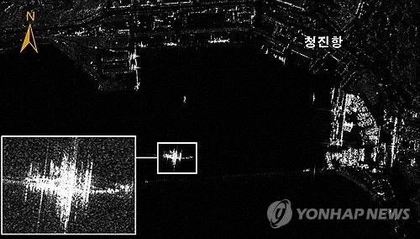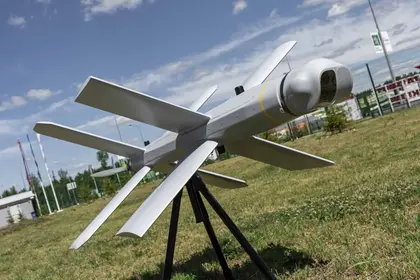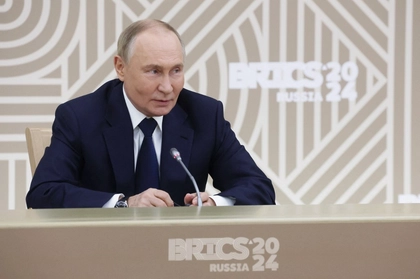According to Russian state media at the weekend the deadly Lancet kamikaze drone, which the Ukrainian military has found difficulty guarding against, is going into mass production and will be able to operate over battlefields in AI-controlled swarms.
The ZALA Lancet-3 strike drone, is a one-way guided weapon with a range of over 40 km with a three-kilogram warhead capable of destroying any combat vehicle on the battlefield.
The Rossiya-1 television journalist Aleksander Rogatkin reported in a Sunday, July 16 broadcast, that production of the weapons is to be tripled in coming months, a claim described by Ukrainian military intelligence as “overly propagandistic and optimistic.”
Andriy Yusov, a representative of the HUR, told Kyiv Post that Tatarstan is emerging as a key hub for UAV production in Russia, although currently “it is more focused on large-scale assembly rather than full-scale production.”
“However, there are plans to establish mass production on a significant scale,” he added. “The figures announced, aiming to produce 45-50 thousand drones per month, seem overly propagandistic and optimistic.”
The Izhevsk-headquartered arms factory ZALA-Aero, a subdivision of the Kalashnikov Group, unveiled the first versions of the drone in 2019 for use by the Russian army in Syria.
Following the Russian full-scale invasion of Ukraine, production rates for the weapon have sharply increased by as much as 50 times, Sunday’s glowing “news report” said.

Up to 12,000 North Korean Troops Transferred to Russia, Satellite Images Show
Rogatkin’s video showed him in a room alongside more than 30 of the eight-winged drones in storage racks. The exact numbers of drones produced in the past and future volumes remain a military secret, he said.
⚡️Russia 1 video report about the new Product-53 drone, which is a part of the lancet family pic.twitter.com/HktoRZezxZ
— War Monitor (@WarMonitors) July 16, 2023
The Russian propagandist Dmitriy Kiselov said the Lancet “is practically impossible to intercept, it flies low and undetected, and functions with the precision of a surgical blade.”
The ZALA-Aero chief designer, Aleksandr Zakharov, said in a recent interview that his firm is currently producing two versions of the weapon, one with a heavier warhead and shorter range, and another designed with a range of up to 70 kilometers.
The weapon is in such demand by the Russian military that ZALA has purchased and converted an unused Izhevsk shopping mall to house a new production facility, he said.
The conversion, which included the installation of the precise machine tools and carbon-fiber production equipment used to build the drones took two months, the report said.
ZALA has completed testing of a Lancet multiple-launch system capable of throwing four attack drones into the air in succession allowing them to operate as a swarm, Rogatkin said.
The newest generation of Lancet drones will communicate with operators using means “that will be practically autonomous … and impossible to interfere with” Zakharov said.
He claimed future generations of the drone will seek and attack targets autonomously using AI. The report included a computer-generated video to illustrate the drone’s alleged swarm capabilities.
The Armed Forces of Ukraine (AFU) troops first encountered Lancet drones during fighting in the Donbas in summer 2022.
The bicycle-sized weapons carry a 2–5-kilogram warhead, depending on the model, but Ukrainian troops consider all models capable of destroying light vehicles, and even knocking out a NATO-standard main battle tank if it hits on top of the target. Zakharov said Lancet can destroy any combat vehicle on the Ukrainian battlefield.
AFU information platforms have, since summer 2022, reported scattered Lancet strikes, with Russian operators seeming primarily to target high-value, hard-to-replace targets such as western air defense systems and artillery fire control radars.
The number of such attacks are increasing in frequency, a June Radio Liberty report said, citing AFU frontline soldiers, and even if production doesn’t triple, any increase is a threat to Ukraine.
Yusov told Kyiv Post: “This poses a serious threat that will create additional challenges for the security and defense forces in Ukraine.
“It also presents an additional challenge for our defense complex, requiring an increase in the production of our own drones. This holds true for our partners as well.”
The Rossiya-1 report went on to show a video of a Lancet striking the side turret of a German-manufactured Leopard 2 tank, apparently setting it on fire. Other images showed Lancet impacts on German PzH70 and Polish Krab howitzers, a Soviet-manufactured S-300 missile system, an American/British M777 towed howitzer and a German Iris-T anti-aircraft missile launcher.
A masked man claiming to be an operator said he personally used Lancet drones to hit 90 Ukrainian heavy weapons.
Rogotkin said that since the start of the war at least 400 pieces of Ukrainian equipment, or other military targets, have been hit by Lancet drones. He cited the independent battle damage tracking site Oryx as the source of this claim.
Kyiv Post, using Oryx figures compiled in March 2023, was only able to identify a total of 113 vehicles or pieces of AFU equipment as having been struck by the drones.
AFU anti-aircraft units have only claimed scattered numbers of hits against the Lancet, as AFU gunners say the drone is difficult to bring down due to its small size and ability to operate at tree-top levels.
Overnight, the Ukrainian Air Force shot down 26 out of 28 Shaheds.
— Defense of Ukraine (@DefenceU) July 11, 2023
Also, during the day on July 10, three "Lancet" attack UAVs, five reconnaissance drones, and one helicopter were downed.
Glory to our air defenders!
🇺🇦✊
📹 @combined2forces pic.twitter.com/OOWIBAzVAg
Ukraine’s premier strike drone at the start of the war, the $5 million Turkey-produced Bayraktar, is no longer capable of functioning effectively in a combat zone thick with air defense systems, Rogotkin said, while the smaller and cheaper Russian Lancet which, according to open sources, costs around $50,000 is able to operate in Ukrainian air space with near impunity.
The Russian state-controlled “news” report offered no hard evidence, past Rogotkin’s and Zakhakorov’s assertions, to back up claims about Lancet combat effectiveness or production volumes. Some international analysts, pointing to longstanding western sanctions on Moscow, have questioned Russia’s capacity to import advanced sufficient quantities of the electronics needed for mass production of drones such as Lancet.
Ukrainian news reports, citing soldiers who have recovered debris from the drones on the battlefield, have identified the inclusion of the NVIDIA Jetson TX-2 processor and the SoC Xilinx Zynq chip board within the drone’s guidance system.
Both of these high-tech components are US-made and are currently on the list of items banned by Washington for export to Russia.
You can also highlight the text and press Ctrl + Enter






